λ Henry Moore (British 1898-1986) Mother and Child Lead 17.2 x 13 x 6.5cm (6 3/4 x 5 1/8 x 21/2in.) (excluding base)Conceived c.1939-1940.Provenance: Hubert de Cronin Hastings (1902-1986), Private Collection Gifted by the above to his son John Hastings (1928-2019) by 1974 Thence by descent to the present ownerThis previously unknown work is now recorded in the Henry Moore Foundation database with the reference number LH213a.Left undiscovered for over 40 years, nestled amongst trinkets on a mantelpiece in a Wiltshire farmhouse, a previously unknown sculpture by Henry Moore comes to market for the very first time. The present lot Mother and Child was authenticated by the Henry Moore Foundation in October 2021 and has been added to their archives under the reference number LH 213a. The work, produced in lead, was conceived in c. 1939-1940 at a time when Moore was experimenting with casting in different materials and incorporating elements in string and wire.This very special piece comes from the former collection of architectural publisher and editor, Hubert de Cronin Hastings (1902-1986), whose near fifty-year stewardship of the Architectural Review saw him shed a light on the many challenges and debates posed across the architectural world during this transformative period.Mother and Child (LH 213a) most likely entered the collection of Hubert de Cronin Hastings 1902-1986) (more commonly known as H. de C. or by his pseudonym Ivor de Wolfe) in the 1940s. H. de C. was chairman of the Architectural Press and Architects Journal and editor of the Architectural Review (AR) from 1927-1973.H. de C. was born at Merton Surrey in 1902 and was the third son of Percy Hastings, who owned the Architectural Press and founded the Architectural Review in 1896. H. de C. studied at Berkhamsted School before attending the Bartlett School of Architecture at UCL. However, he never went on to qualify, instead moving to the Slade School of Arts where he is likely to have met John Piper during the early-mid 1920s.In 1927, he joined the family business and became joint editor of the AR with Christian Berman. The magazine was published monthly and together they changed the style of the magazine putting an emphasis on the arts with contributions from the likes of Evelyn Waugh, Osbert and Sacheverell Sitwell and Paul Nash whilst the editorial board included Sir Hugh Casson and cartoonist Osbert Lancaster The AR became one of the leading architectural magazines to promote modernism throughout the 1930s and regularly featured articles on painting, sculpture and interior design. He deemed architecture an art form and believed that the understanding of one could support the other. H. de C. 'saw the logic of this as a bright new future for society' as quoted in the Oxford Dictionary of National Biography.H. de C. was first introduced to Henry Moore by Jim Richards who was assistant editor at the AR alongside John Betjeman Richards who had befriended the artist early on in his career published an article on Moore's work in the AR in 1934. Moore later commented in an interview in 1979 with Jonathan Glancey architectural critic and writer, that he was appreciative of the AR's support. It would be interesting to think that Moore repaid his appreciation by gifting this sculpture to H. de C. or perhaps H. de C.'s support and encouragement of the artist extended to supporting his career by purchasing the work.By 1974 the sculpture had been passed to his son, John Hastings (1928-2019) where it sat on his mantelpiece in the living room beside a Papier Mache elephant and a china bull, objects which were valued for their sentimental rather than monetary value. John was a countryman and farmer who bred sheep and livestock, more interested in animals than fine art. To John, the Mother and Child that made its home on his mantelpiece was a sentimental family object and nothing more.During the authentication process the panel were able to link the present lot to a known sket
λ Henry Moore (British 1898-1986) Mother and Child Lead 17.2 x 13 x 6.5cm (6 3/4 x 5 1/8 x 21/2in.) (excluding base)Conceived c.1939-1940.Provenance: Hubert de Cronin Hastings (1902-1986), Private Collection Gifted by the above to his son John Hastings (1928-2019) by 1974 Thence by descent to the present ownerThis previously unknown work is now recorded in the Henry Moore Foundation database with the reference number LH213a.Left undiscovered for over 40 years, nestled amongst trinkets on a mantelpiece in a Wiltshire farmhouse, a previously unknown sculpture by Henry Moore comes to market for the very first time. The present lot Mother and Child was authenticated by the Henry Moore Foundation in October 2021 and has been added to their archives under the reference number LH 213a. The work, produced in lead, was conceived in c. 1939-1940 at a time when Moore was experimenting with casting in different materials and incorporating elements in string and wire.This very special piece comes from the former collection of architectural publisher and editor, Hubert de Cronin Hastings (1902-1986), whose near fifty-year stewardship of the Architectural Review saw him shed a light on the many challenges and debates posed across the architectural world during this transformative period.Mother and Child (LH 213a) most likely entered the collection of Hubert de Cronin Hastings 1902-1986) (more commonly known as H. de C. or by his pseudonym Ivor de Wolfe) in the 1940s. H. de C. was chairman of the Architectural Press and Architects Journal and editor of the Architectural Review (AR) from 1927-1973.H. de C. was born at Merton Surrey in 1902 and was the third son of Percy Hastings, who owned the Architectural Press and founded the Architectural Review in 1896. H. de C. studied at Berkhamsted School before attending the Bartlett School of Architecture at UCL. However, he never went on to qualify, instead moving to the Slade School of Arts where he is likely to have met John Piper during the early-mid 1920s.In 1927, he joined the family business and became joint editor of the AR with Christian Berman. The magazine was published monthly and together they changed the style of the magazine putting an emphasis on the arts with contributions from the likes of Evelyn Waugh, Osbert and Sacheverell Sitwell and Paul Nash whilst the editorial board included Sir Hugh Casson and cartoonist Osbert Lancaster The AR became one of the leading architectural magazines to promote modernism throughout the 1930s and regularly featured articles on painting, sculpture and interior design. He deemed architecture an art form and believed that the understanding of one could support the other. H. de C. 'saw the logic of this as a bright new future for society' as quoted in the Oxford Dictionary of National Biography.H. de C. was first introduced to Henry Moore by Jim Richards who was assistant editor at the AR alongside John Betjeman Richards who had befriended the artist early on in his career published an article on Moore's work in the AR in 1934. Moore later commented in an interview in 1979 with Jonathan Glancey architectural critic and writer, that he was appreciative of the AR's support. It would be interesting to think that Moore repaid his appreciation by gifting this sculpture to H. de C. or perhaps H. de C.'s support and encouragement of the artist extended to supporting his career by purchasing the work.By 1974 the sculpture had been passed to his son, John Hastings (1928-2019) where it sat on his mantelpiece in the living room beside a Papier Mache elephant and a china bull, objects which were valued for their sentimental rather than monetary value. John was a countryman and farmer who bred sheep and livestock, more interested in animals than fine art. To John, the Mother and Child that made its home on his mantelpiece was a sentimental family object and nothing more.During the authentication process the panel were able to link the present lot to a known sket


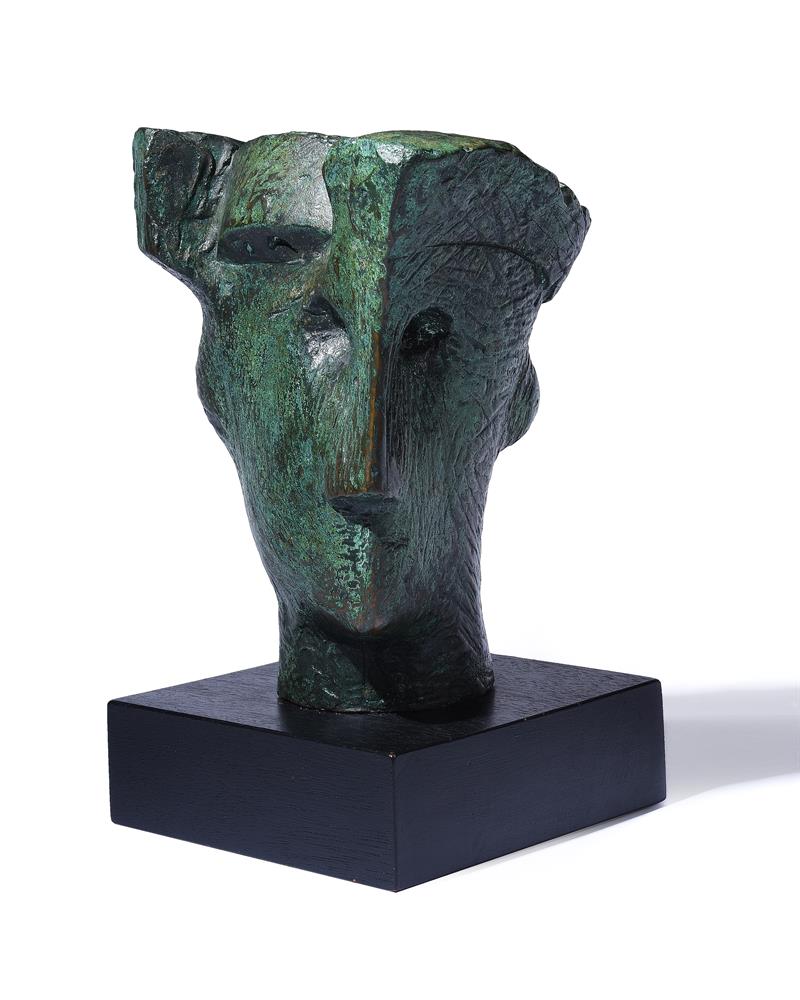
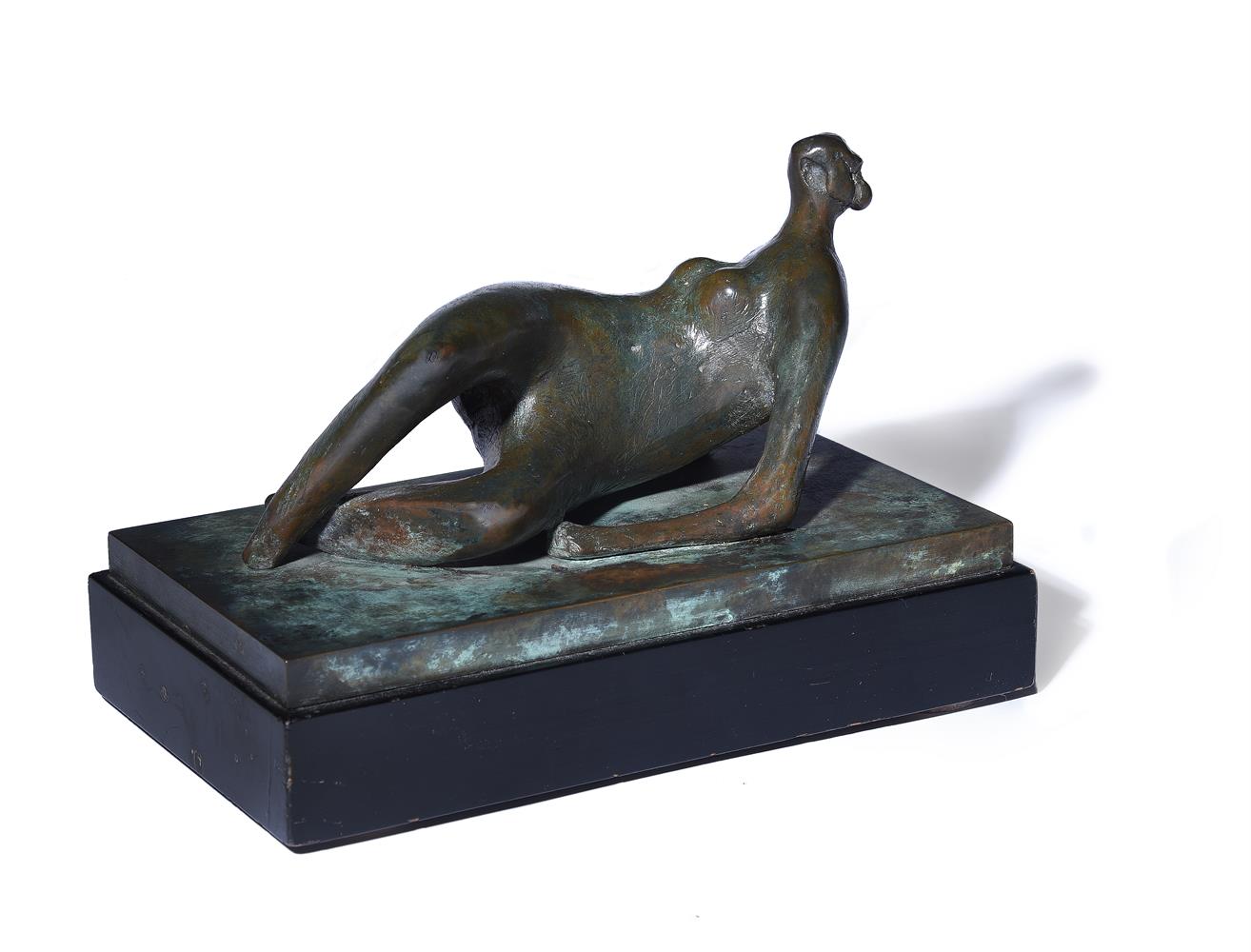
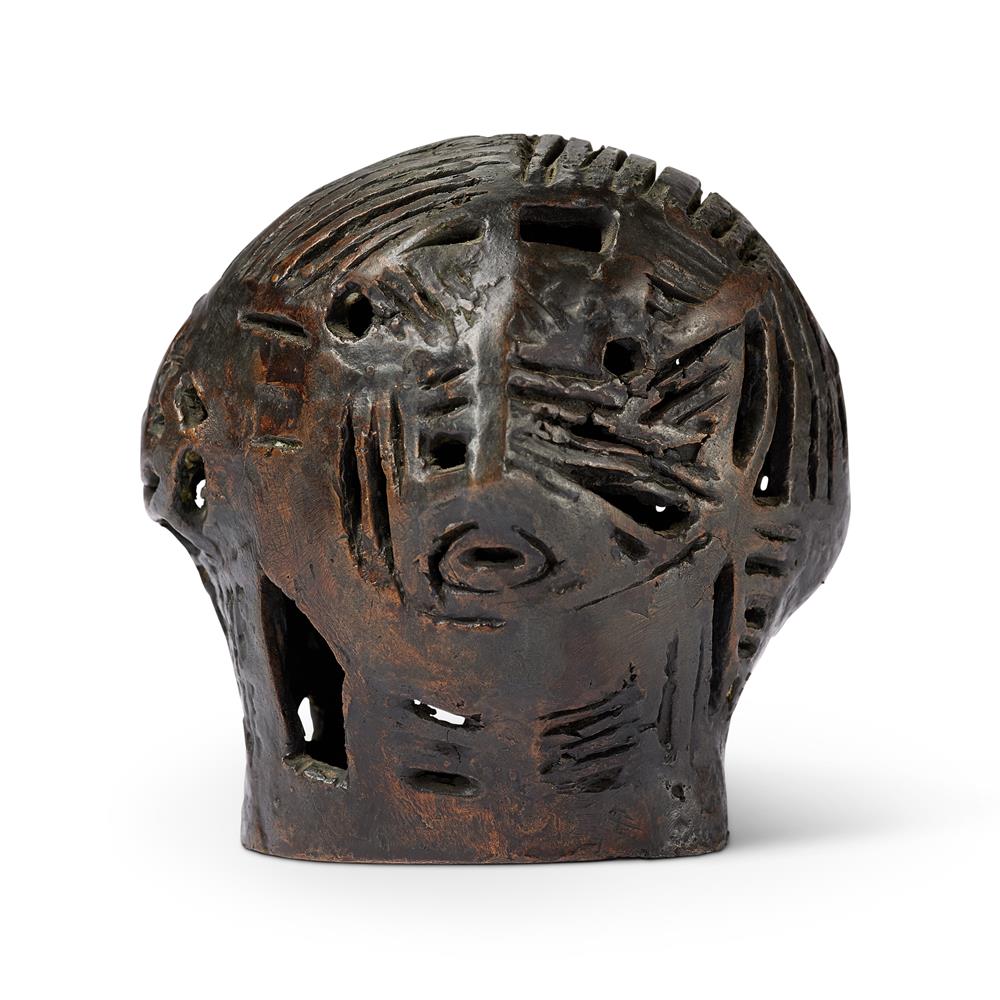
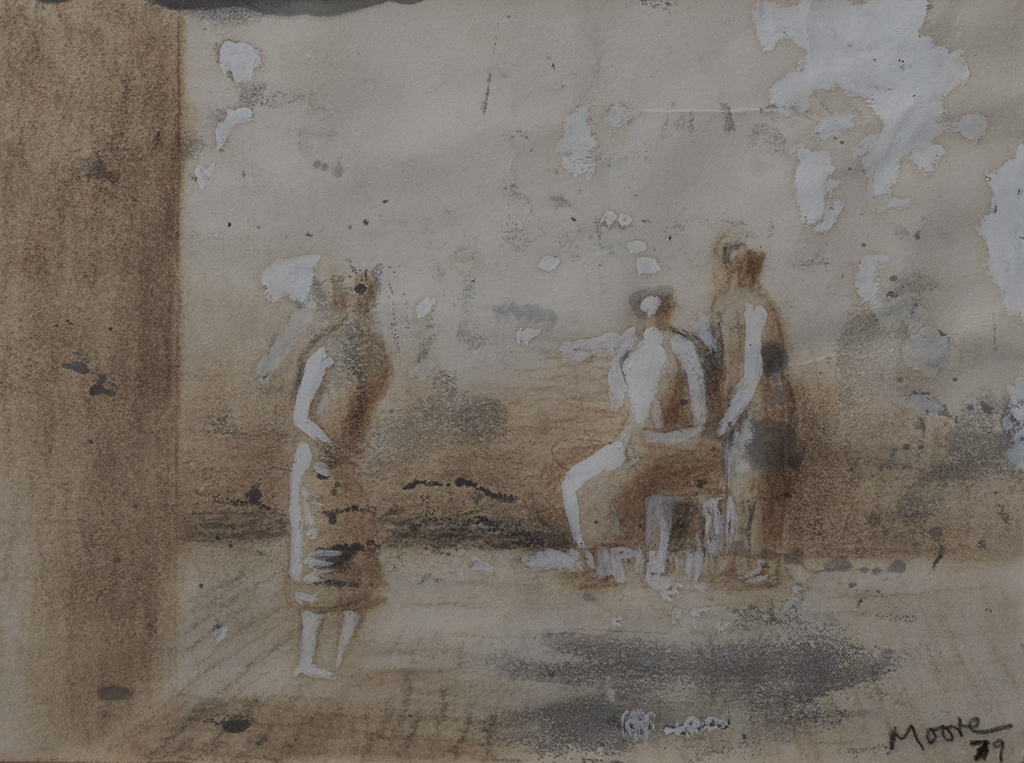






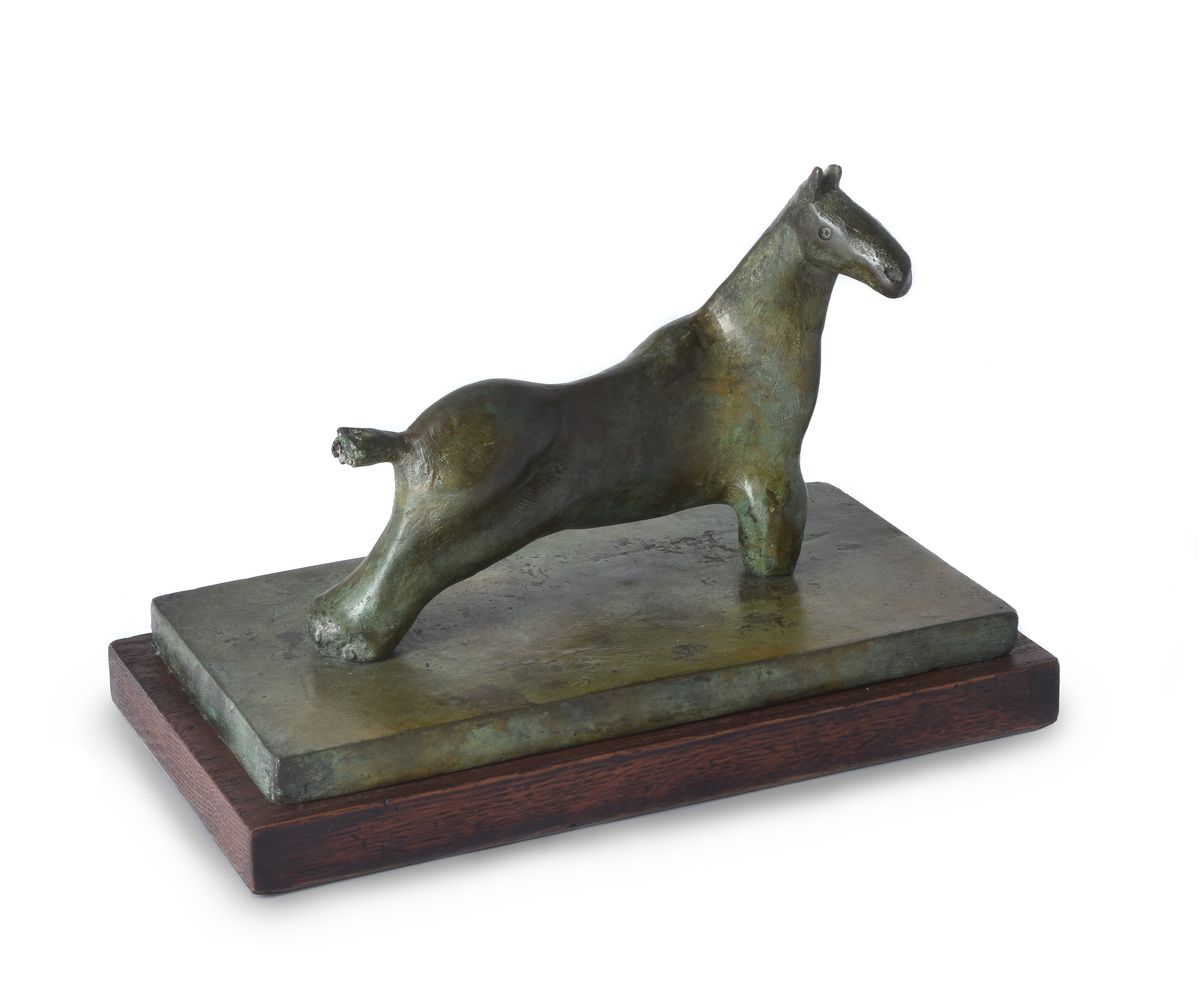


Try LotSearch and its premium features for 7 days - without any costs!
Be notified automatically about new items in upcoming auctions.
Create an alert